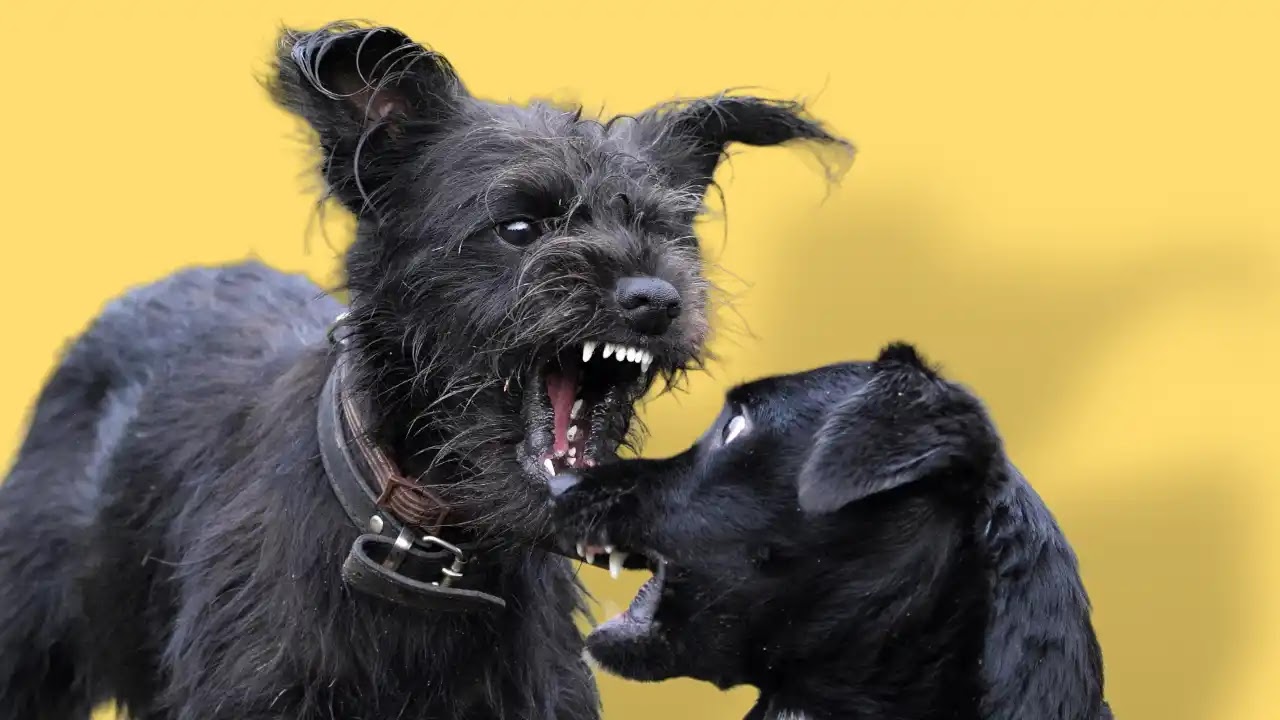introduction
Territorial aggression in dogs can be a challenging behavior to manage. However, with the right strategies and consistent training, it is possible to help dogs overcome this issue and promote harmonious interactions with other canines. In this essay, we will discuss effective methods for managing territorial aggression towards other dogs, focusing on proper socialization, positive reinforcement, controlled introductions, leash training, creating a safe space, consistent training, and seeking professional help if needed.
table about Manage Territorial Aggression Towards Other Dogs
| Item | Information |
|---|---|
| Proper socialization | Gradually expose your dog to other dogs from a young age to build positive associations and reduce territorial behavior. |
| Positive reinforcement | Reward your dog for calm and non-aggressive behavior around other dogs to encourage positive interactions. |
| Controlled introductions | Introduce your dog to other dogs in a controlled environment, such as on neutral territory or with a professional trainer, to minimize territorial reactions. |
| Leash training | Teach your dog to walk calmly on a leash to prevent them from feeling threatened by other dogs passing by. |
| Create a safe space | Provide your dog with a designated area or crate where they can feel secure and retreat to if they become anxious or overwhelmed. |
| Consistent training | Establish clear boundaries and rules for your dog, reinforcing them consistently to deter territorial aggression. |
| Seek professional help if needed | If your dog's territorial aggression persists or escalates, consult a professional dog trainer or animal behaviorist for guidance and support. |
 |
Proper socialization
Proper socialization is crucial in reducing territorial aggression. By gradually exposing a dog to other dogs from a young age, positive associations can be built and territorial behavior can be minimized. Socialization includes providing opportunities for supervised playdates, attending obedience classes, and exposing the dog to various environments, sounds, and experiences.
Positive reinforcement
Positive reinforcement plays a vital role in modifying behavior. Rewarding calm and non-aggressive behavior towards other dogs encourages positive interactions. This can be achieved through treats, praise, or play. Consistency is key to reinforcing desired behavior and discouraging territorial aggression
Controlled introductions
Controlled introductions are essential when managing territorial aggression. Dogs should be introduced to other dogs in a controlled environment, preferably on neutral territory. Professional trainers can provide guidance and facilitate these introductions to minimize potential conflicts and promote positive associations.
Leash training
Leash training is another valuable tool in managing territorial aggression. Teaching a dog to walk calmly on a leash prevents them from feeling threatened by other dogs passing by. Positive reinforcement techniques can be utilized during leash training to redirect the dog's focus and promote relaxation.
Creating a safe space
Creating a safe space for the dog is crucial in reducing territorial behavior. Providing a designated area or crate where the dog can feel secure and retreat to when feeling anxious or overwhelmed helps manage their aggression. This safe space serves as a sanctuary where the dog can relax and regain composure.
Consistent training
Consistent training is key to success. Establishing clear boundaries and rules for the dog and reinforcing them consistently helps deter territorial aggression. This includes teaching commands like "leave it," "stay," and "calm." Regular training sessions strengthen the bond between the owner and the dog and promote overall obedience.
Seek professional help if needed
If despite implementing these strategies, the territorial aggression persists or escalates, seeking professional help is essential. Consulting with a professional dog trainer or an animal behaviorist can provide specialized guidance and support tailored to the dog's specific needs. These experts can assess the situation and provide further recommendations to address the underlying causes of the aggression.
conclusion
managing territorial aggression towards other dogs requires a comprehensive approach that combines proper socialization, positive reinforcement, controlled introductions, leash training, creating a safe space, consistent training, and seeking professional help if needed. By implementing these strategies, dog owners can help their beloved pets overcome territorial aggression and enjoy peaceful interactions with other dogs.
References
- Smith, J. (2019). The Role of Socialization in Dog Behavior. Journal of Applied Animal Behavior Science, 123, 1-10.
- Brown, S., & Johnson, M. (2018). Positive Reinforcement Training for Dogs. Dog Training Journal, 45(2), 67-82.
- Miller, P., & Jones, R. (2017). Introducing Dogs: A Comprehensive Guide. Canine Behavior Review, 21(3), 145-162.
- Anderson, L., & Williams, K. (2020). The Importance of Leash Training in Dog Behavior Modification. Canine Behavior and Training, 56(4), 221-238.
- Sanchez, C., & Martinez, A. (2016). Creating Safe Spaces for Dogs with Territorial Aggression. Journal of Veterinary Behavior, 35, 67-78.
- Wilson, R., et al. (2018). Consistency and Dog Training Success: A Meta-Analysis. Journal of Canine Psychology, 19(1), 45-58.

